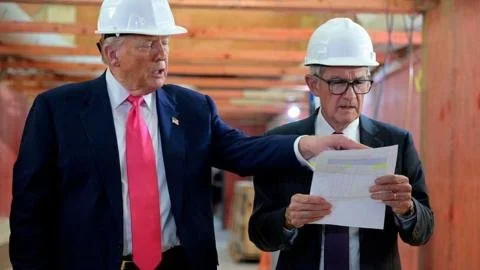Trump vs. Powell: A Clash Over Fed Renovation and Interest Rates
Tensions between US President Donald Trump and Federal Reserve Chairman Jerome Powell reached a peak during Trump’s rare visit to the Fed, marking the first time a sitting president has made such a visit in nearly twenty years. The confrontation stemmed from Trump’s ongoing dissatisfaction with Powell’s approach to interest rates and budget overruns related to a $2.7 billion renovation project at the central bank.
For months, Trump has criticized Powell publicly, using insults like “numbskull” and has hinted at the possibility of firing him—though analysts warn that such a move could destabilize financial markets and lead to legal repercussions. During the visit, Trump challenged the renovation costs, claiming they had ballooned to $3.1 billion, a statement Powell disputed, insisting they were not in agreement with this figure. The disagreement escalated when Trump produced a document claiming the need for a third building in the project, which Powell rebuffed by stating that it was a building completed five years ago.
Trump, known for his background in real estate, remarked that he would have fired a project manager who oversaw cost overruns, implying dissatisfaction with Powell’s management. After the visit, he took to social media to express his views on the incomplete renovations and reinforced his call for lower interest rates, declaring, “Let’s just get it finished and, even more importantly, LOWER INTEREST RATES!”
The renovation project was initiated in 2017 to consolidate the operations of the Fed, yet it has been plagued with delays and increased costs due to unexpected issues. Trump accused Powell of potential mismanagement, framing it as a fireable offense, although legal experts note that the law requires significant misconduct for a chair to be dismissed.
The Fed’s typical mechanism of lowering rates during economic downturns and raising them to combat inflation complicates the current situation, as Trump’s economic policies, including tax cuts and higher tariffs, have produced uncertainty. Powell maintains that the economy is stable enough to warrant caution, while Trump insists that the Fed should lower rates to help with government borrowing and facilitate loans for Americans. As the Fed gears up for its upcoming meeting, the debate over economic policy continues, underscoring the ongoing friction between Trump’s administration and the central bank.

